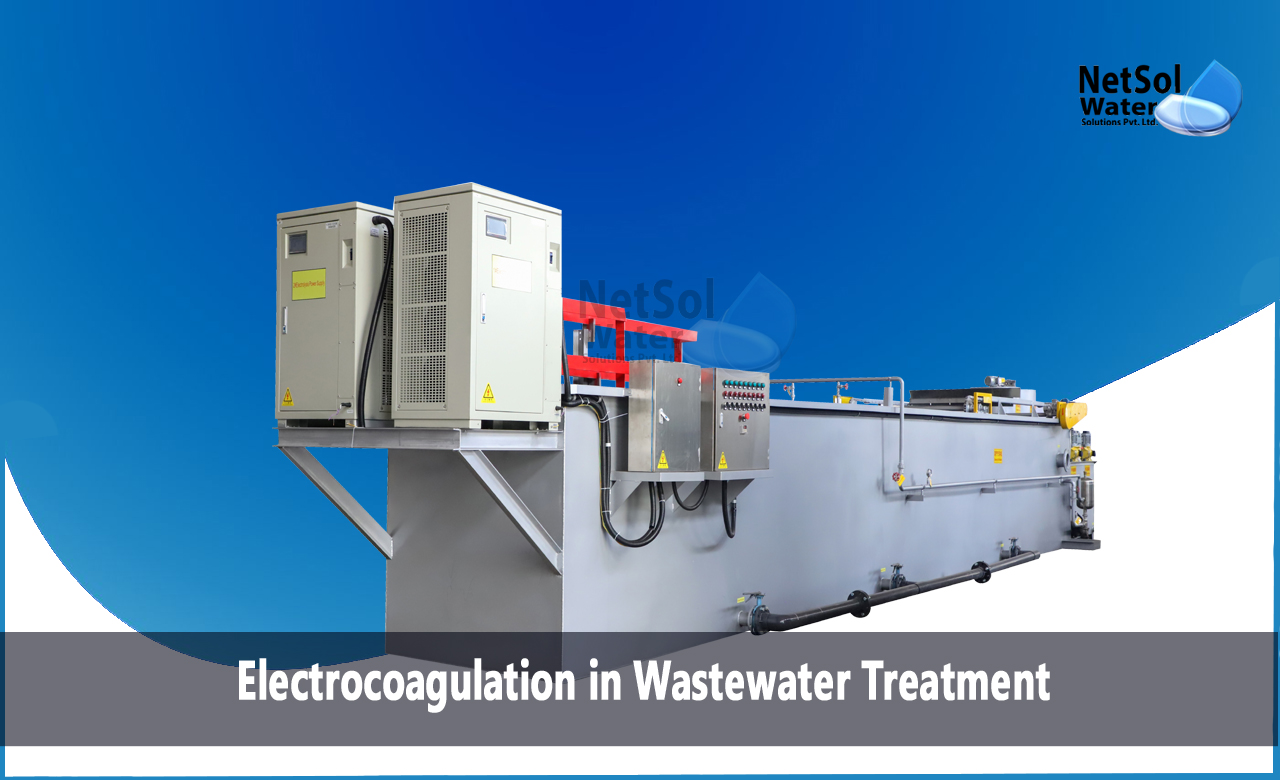What is Electrocoagulation in Wastewater Treatment?
The treatment of wastewater is an essential step in preserving the environment and general public health. While conventional techniques have proven successful, they frequently result in high energy usage and leftover garbage. Electrocoagulation is a novel and environmentally friendly wastewater treatment method that has gained popularity recently. This blog examines the fundamentals and advantages of electrocoagulation, illuminating its uses and favourable effects on the environment.
Understanding Electrocoagulation
Wastewater can be made cleaner by using an electrochemical technique called electrocoagulation, which uses electrical current to remove impurities and pollutants. It is founded on the ideas of flocculation and coagulation, processes that lead to the aggregation and destabilisation of dissolved and suspended particles. The procedure depends on the wastewater's natural production of coagulants.
Electrodes, which are often constructed of iron or aluminium, are the main parts of an electrocoagulation system. These electrodes are submerged in the wastewater that needs to be treated. The electrodes corrode when an electrical current is supplied, releasing metal ions into the water. By reacting with contaminants and neutralising the charges on particles, these metal ions produce flocs that are easily removed from the water.
Advantages of Electrocoagulation
· Energy Efficiency: Compared to conventional chemical coagulation methods, electrocoagulation has a higher energy efficiency. It is a more environmentally friendly option since it uses less energy to aggregate and destabilise wastewater particle matter.
· Decreased Chemical Usage: Electrocoagulation creates coagulants on the spot, as opposed to traditional coagulation techniques which require the addition of chemical coagulants. This lessens the treatment process's environmental impact by doing away with the requirement for chemical handling, storage, and disposal.
· Versatile: Organic chemicals, heavy metals, suspended particles, and even infections can all be successfully treated by electrocoagulation. Because of its adaptability, it may be used for a range of municipal and industrial wastewater treatment applications.
· Minimal Sludge Generation: In electrocoagulation, the coagulated particles create larger, more readily removed flocs. Because of this, there is a decrease in the generation of sludge, which lowers disposal costs and the environmental impact of sludge management.
· pH Adjustment: Wastewater can have its pH simultaneously adjusted using electrocoagulation. When pH management is necessary for a successful course of therapy, this feature is quite helpful.
Applications of Electrocoagulation
· Industrial Wastewater Treatment: To treat wastewater contaminated with heavy metals, oils, and other industrial pollutants, electrocoagulation is widely employed in a variety of industrial sectors, including food and beverage, textile, mining, and oil and gas. It provides a long-term strategy for fulfilling legal obligations and lessening environmental effect.
· Municipal Wastewater Treatment: Phosphorus, nitrogen, and suspended particles can be removed from municipal wastewater treatment facilities using electrocoagulation. It helps to raise the standard of effluents released into naturally occurring water bodies.
· Groundwater Remediation: Electrocoagulation is a useful technique that can efficiently treat and restore the quality of groundwater that has been contaminated with metals, hydrocarbons, or other contaminants, ensuring that it is suitable for drinking or other uses.
· Treatment of Agricultural Wastewater: Electrocoagulation is a useful method for handling agricultural wastewater, which may include too much organic matter and extra nutrients. It may lessen the harm that agricultural runoff causes to nearby aquatic bodies.
Environmental Benefits
· Decreased Chemical Pollution: By using less chemical coagulants, electrocoagulation lowers the possibility of chemical pollution in water bodies. This is especially important for places where chemical discharges can have negative impacts.
· Reduced Energy Consumption: Because electrocoagulation is a more energy-efficient process, it helps to treat wastewater with less energy, which lowers greenhouse gas emissions.
· Enhanced Water Quality: Electrocoagulation helps rivers, lakes, and other receiving waters have better water quality by efficiently eliminating pollutants, which is good for aquatic life and ecosystems.
· Resource Recovery: Under some circumstances, electrocoagulation can help recover precious materials from wastewater, such as metals, thereby advancing sustainable resource management.
Conclusion:
Although electrocoagulation has many advantages, there are drawbacks as well. To maximise its performance, system design, electrode material, and maintenance must be carefully studied. Furthermore, for it to be widely adopted, governmental approval and professional acceptance in wastewater treatment are essential.
To sum up, electrocoagulation is a viable and long-term approach to treating wastewater. For a variety of sectors and municipalities, its energy efficiency, low chemical usage, adaptability, and environmental advantages make it a desirable choice. Electrocoagulation is emerging as a technology that plays a critical part in establishing a more sustainable future for wastewater treatment as the globe looks for novel and environmentally friendly ways to manage water pollution and preserve water quality.
Netsol Water is Greater Noida-based leading water & wastewater treatment plant manufacturer. We are industry's most demanding company based on client review and work quality. We are known as best commercial RO plant manufacturers, industrial RO plant manufacturer, sewage treatment plant manufacturer, Water Softener Plant Manufacturers and effluent treatment plant manufacturers. Apart from this 24x7 customer support is our USP. Call on +91-9650608473, or write us at enquiry@netsolwater.com for any support, inquiry or product-purchase related query.



